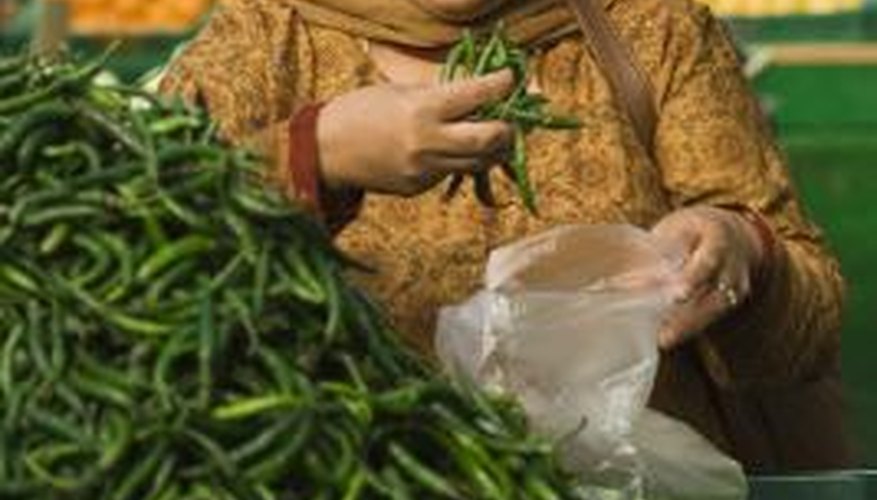Indian cuisine relies on many vegetables and herbs commonly grown in North American gardens. Speciality Indian vegetable seeds for edible gourds, gawar and yard-long beans, tulsi (holy basil) and more are available online. These annuals grow best where summers are long and hot, so start seeds indoors if your growing season is short.
Start seeds for tulsi, fenugreek, lemon grass, bhandhania (culantro), chillies and eggplant in peat pellets eight weeks before nights in your in climate zone reach above 10 degrees C, when all danger of frost is past. Start seeds for edible gourds, poona-kheera and dosakkai cucumber, melons, Amir pumpkin, squash and Malabar spinach four weeks before the last frost.
Soak the flat peat pellets in a tray of water for 20 minutes until they absorb the water and puff up to 1 inch tall. Tuck a seed into the hole in the top of the pellet. Use a pencil to move some of the moist peat over the seed so it is about 1/8 inch deep in the pellet. Place the trays under fluorescent or LED grow lights so that the light is no more than 3 inches above the pellets. Water the pellets to keep them moist, but don't let them sit in water. Raise the lights as the plants grow, so the light is always 2 to 3 inches above the top leaves.
- Indian cuisine relies on many vegetables and herbs commonly grown in North American gardens.
- Place the trays under fluorescent or LED grow lights so that the light is no more than 3 inches above the pellets.
Move the seedlings outdoors gradually two weeks before the last frost. Put them in a shaded area for a few hours the first day, then for longer periods each day, moving them slowly into full sun. Bring them in at night for the first week. Depending on your climate, getting them accustomed to sun and wind takes from one to two weeks.
- Move the seedlings outdoors gradually two weeks before the last frost.
- Depending on your climate, getting them accustomed to sun and wind takes from one to two weeks.
Plant your starts in the sunniest part of your yard; a minimum of six hours of direct sun, preferably from the south or west, is best for heat-loving Indian vegetables. Dig manure or compost, or both, into the planting area to a depth of 12 inches with a garden fork. Sprinkle vegetable fertiliser (N-P-K 4-4-4 or similar) over the area and mix it in to a depth of 4 inches.
Plant seeds for coriander, red sorrel, gangiaval koora (purslane), okra (soak okra seeds in water overnight) and beans directly into the garden when you plant your transplants. The seed packet will tell you how deep and how far apart to plant.
Water the seeds and seedlings with a light but thorough spray from the hose, or with a watering can. Keep them moist. Give them an inch of water each week once they're 3 inches tall. Water regularly through the growing season, especially when they're producing. Pull weeds as soon as you see them.
- Plant seeds for coriander, red sorrel, gangiaval koora (purslane), okra (soak okra seeds in water overnight) and beans directly into the garden when you plant your transplants.
- Pull weeds as soon as you see them.
